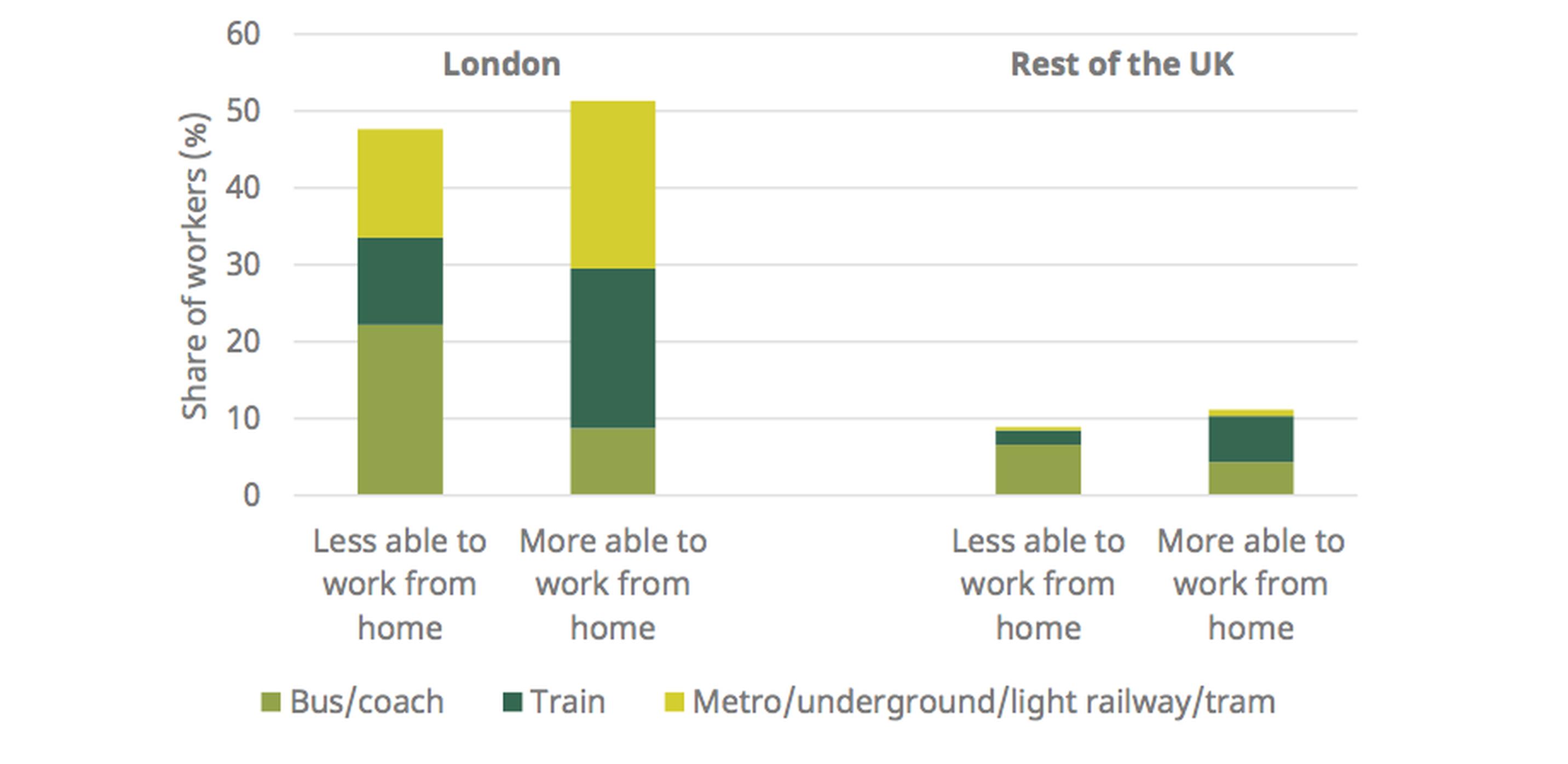

Returning to work while maintaining social distancing will require much continued working from home and substantial changes to commuting patterns, suggests research by the Institute for Fiscal Studies (IFS).
IFS researchers looked at normal, pre-lockdown commuting patterns and what they say about who would be affected by continued social distancing on public transport, and how policy can ease public transport congestion under continued social distancing.
The results are published in a report called Changes down the line: flattening the curve of public transport use.
The report suggests that while fewer than one in six (14%) use public transport to get to work across the UK, this rises to one in two (49%) among workers living in London. However, the nature of jobs in London means these are more often conducive to home working than those elsewhere in the country.
Compared to other forms of commuting public transport use is very concentrated at particular times, especially in London and the South East, the IFS says. Between 8:20 and 8:30am, the UK-wide peak commuting time, 44% of those commuting at that time in London and the South East were doing so using public transport. Peaks are higher in London and the South East as commuting times are more concentrated and average commutes longer. Encouraging workers to work different shifts or make use of other forms of transport will therefore be particularly important in London and other urban areas.
Workers who can work from home are much more likely to have been commuting at peak times before the lockdown, says the IFS.
Continuing much home working is therefore likely to be disproportionately effective at reducing public transport congestion. Between 7:00 and 7:10am, 24% of those travelling by public transport before the lockdown were non-key workers who could work from home, but this proportion rose to 43% of those commuting at the far busier time between 8.20am and 8.30am.
Less helpfully from the perspective of easing congestion, ‘key workers’ who cannot work from home were just as likely to have been commuting at peak times as other workers before the lockdown, says the IFS.
Younger workers emerge as being the most reliant on public transport to get to work, with almost a fifth of workers aged 16-24 using it compared to just 9% of workers aged 55 and over, according to the report. In London, 63% of working young people commute by public transport, compared to 40% of those aged 55 and over. Younger workers were also less likely to work in jobs that could be done from home before the lockdown. There will be challenges in getting many younger workers back to work safely even if the businesses that employ them do reopen.
Accommodation and food stands out alongside administration and wholesale and retail as sectors with both relatively high public transport use and low ability to work from home, the IFS states. Especially in London, workers in these sectors may struggle to return to their previous jobs while maintaining social distancing; in London 66% of workers in accommodation and food commute on public transport but only 28% are estimated to be able to work from home.
Workers in industries such as finance are more able to work from home and more likely to have taken public transport to work in normal times. Getting workers in these sectors to continue to work from home will therefore be extremely important.
Alex Davenport, a research economist at IFS, said: “Returning to their work, while maintaining social distancing, will clearly be difficult for those who commute using public transport. This is particularly true in London, and especially so among younger workers in London. Fortunately, many who previously used public transport are able to work from home – such as those working in finance.
“If social distancing on public transport is to be achieved then getting these workers to continue to work from home will be very important. In contrast re-opening the hospitality sector will create a particular challenge as many workers in this sector cannot work from home and were relatively heavy users of public transport to get to work.”
The IFS report was funded by the Economic and Social Research Council (ESRC).
To download the report click here
TransportXtra is part of Landor LINKS
© 2026 TransportXtra | Landor LINKS Ltd | All Rights Reserved
Subscriptions, Magazines & Online Access Enquires
[Frequently Asked Questions]
Email: subs.ltt@landor.co.uk | Tel: +44 (0) 20 7091 7959
Shop & Accounts Enquires
Email: accounts@landor.co.uk | Tel: +44 (0) 20 7091 7855
Advertising Sales & Recruitment Enquires
Email: daniel@landor.co.uk | Tel: +44 (0) 20 7091 7861
Events & Conference Enquires
Email: conferences@landor.co.uk | Tel: +44 (0) 20 7091 7865
Press Releases & Editorial Enquires
Email: info@transportxtra.com | Tel: +44 (0) 20 7091 7875
Privacy Policy | Terms and Conditions | Advertise
Web design london by Brainiac Media 2020